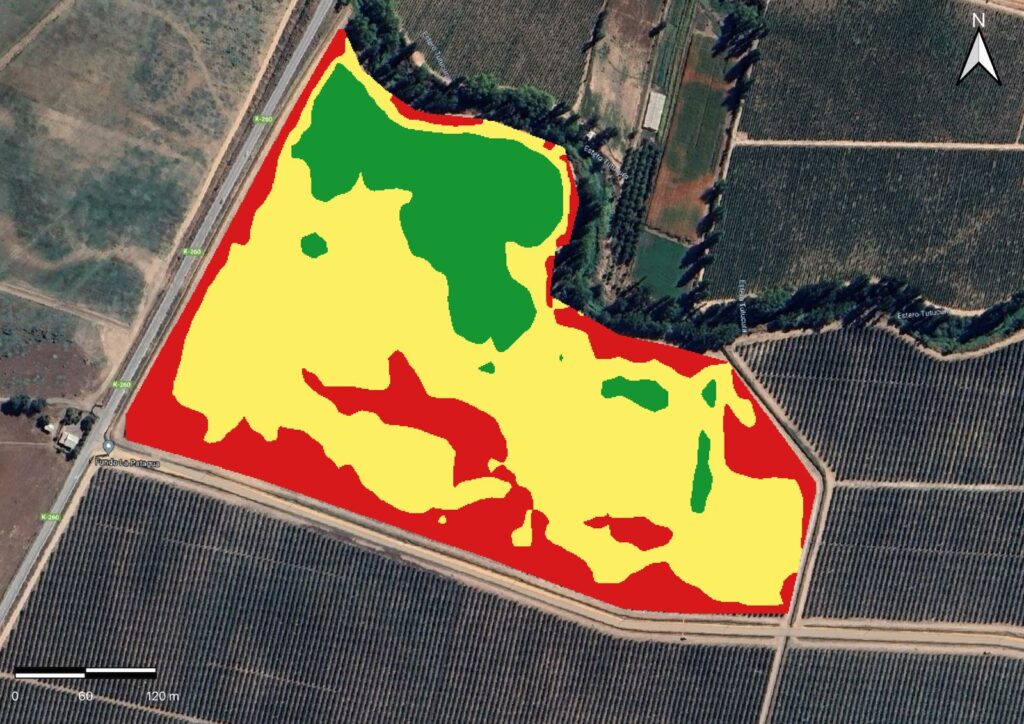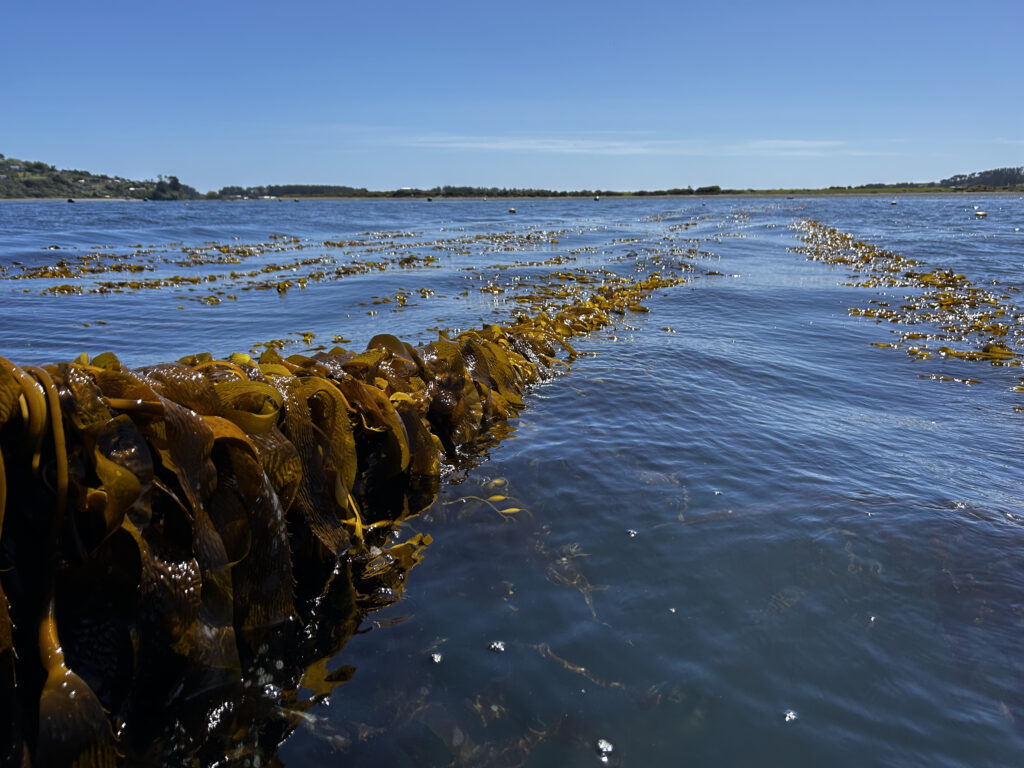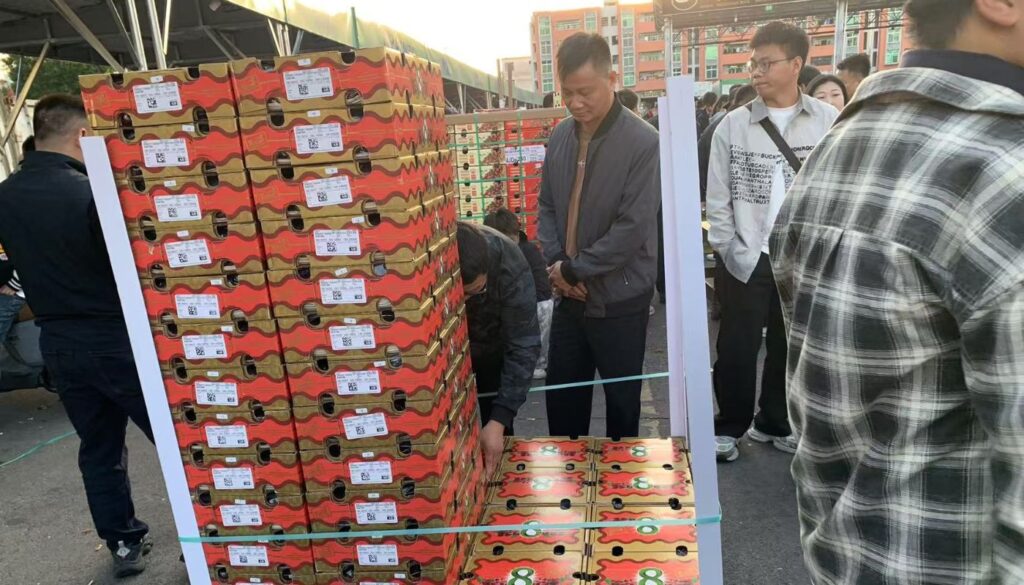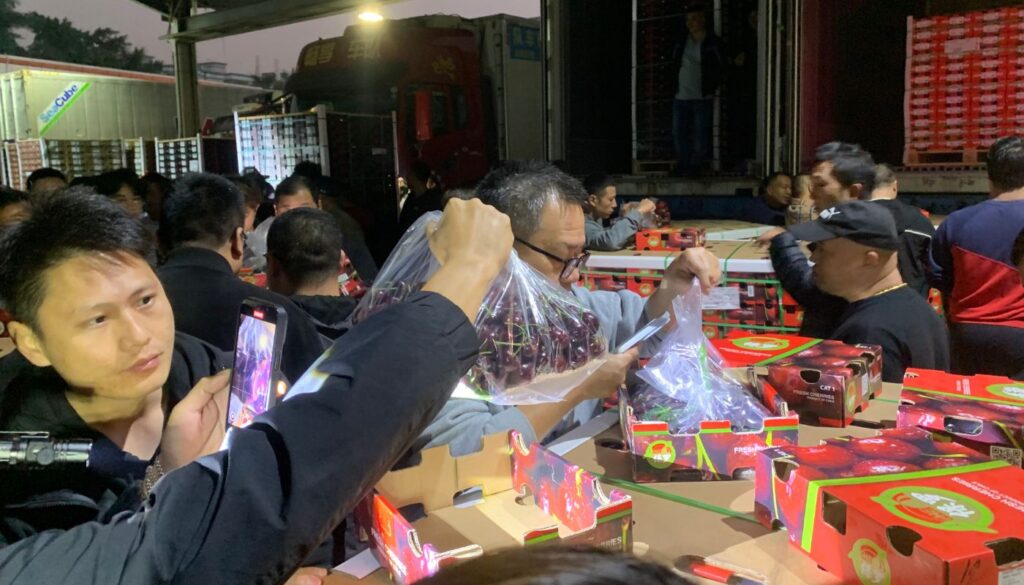By: Carlos J. Tapia T. Agricultural Engineer M. Sc. Technical Director Avium-Co-founder Smartcherry.cl – Bruno Tapia Z. Agricultural Engineer. Technical advisor to Avium producers.
Despite difficulties in marketing our country's cherry production over the last two seasons, the sector continues to boom with approximately 32,000 hectares of productive plantations, more than 50,000 hectares planted and an annual growth rate of around 12 percent.
In Chile, cherries are considered one of the three most important fruit species and every year new producers and investors interested in the business join. However, before embarking on the creation of a cherry orchard model, it is important to define a series of elements:
1. Property knowledge.
To begin and determine the next steps, it is vitally important to fully understand the property on which work will be carried out. To do this, a complete soil study must be carried out (effective depth, physical and/or chemical impediments, textural, chemical and biological analysis) and a thorough agroclimatological study, in order to have the greatest amount of information to make the best decisions according to each reality and not fall into the common error of taking neighbouring projects as a reference.
This process is of utmost importance, as it is a determining factor in the productive potential and useful life of an orchard. It is important to recognize the site in climatic terms, mainly with respect to the accumulation of cold hours in the dormant period between the months of May and July and, on the other hand, the accumulation of degree days from the month of August with respect to how quickly that area accumulates temperature, which would determine whether it is an early zone or a slightly later zone.
2. Variety/rootstock selection.
The variety/rootstock selection should be made according to the climate where the orchard will be located, given that the cold requirements in warmer areas, for example, and early harvesting are a good commercial alternative if it is done before November 25. On the other hand, in a colder area it will be better to focus on varieties that allow late harvesting, starting from the last 10 days of December, while in intermediate areas, varieties should be sought that can be competitive against the large volume of fruit at the time.
The choice of varieties is adjusted to the climate of the area. In warmer areas we will favour early varieties with short sites to take advantage of the early harvest in the form of primor, and in later or mid-season areas we will favour mid-season or late varieties to take advantage of the area. However, this does not mean that later varieties cannot be implemented in early areas and earlier varieties in late areas, since this is not necessarily governed by the climate in terms of thermal accumulation, but rather with respect to the fact that many times there is the objective of lengthening the harvest window. For example, implementing Santina in a cold area no longer seems crazy because Santina, although it is a variety that is classified as an early variety, also adapts to mid-season or late areas, which allows the harvest process to begin as a kind of “soft march”.
On the other hand, for example, Sweetheart is a late-harvest variety, but it would not be a contradiction to plant it in an early zone because it is a variety that requires little cold accumulation and could lengthen the harvest or the harvest window immediately after Lapins. So it is not necessarily that late varieties cannot be planted in the zone that does not correspond to them, but rather that it is beneficial to lengthen or advance the harvest windows.
Once the variety to be planted has been chosen, it is important to determine the rootstock that will accompany it. This must be suitable for both the type of soil and the rootstock/variety combination. It is necessary to avoid using a variety with low setting (or fertility) on a vigorous rootstock, and for varieties with more “setting”, it is recommended to use rootstocks with less vigor, also considering that the lower the rootstock’s vigor, the smaller the potential for size. The rootstock is directly governed by the soil condition. Different rootstocks have different adaptation characteristics in different types of soil. On the one hand, for example, in very water-retaining and clayey soils, the Colt rootstock is the most suitable. In lighter soils, the MaxMa 14 or MaxMa 60 series could be an alternative, and in the case of loamy to clayey soils, the Gisela® series, which is conditional on Gisela® 5, 6 or 12, could also be an alternative. However, the Colt rootstock is adaptable to any site and any soil condition.
See: https://smartcherry.cl/infografias/vigor-and-fertility-in-graftstocks
3. Choice of driving system.
The training system must then be decided, which will be determined by two main factors: one, the way of working that best suits the producer, and the other related to the variety/rootstock combination. The weaker the combination, the greater the focus on the central axis, considering not abusing the dilution of a predetermined vigor according to the characteristics of the site to be planted. The more vigorous, the greater the tendency to vigor dilution systems, such as Y-trellis or KGB, among others.
However, lately it has become a great challenge to achieve an attractive orchard for the workforce, especially during the harvest, a short and intense period of massive fruit picking in the country. Having the rootstock and the variety, one should present the proposal for a training system. The more vigorous the rootstock and the combination used, the more it would be necessary to dilute the vigor in some training system that allows distributing the force of the plant, mainly speaking of a “multi-axis”, a “Y-Trellis” or “KGB”.
The less vigour the rootstock has in the case of Gisela® at the other extreme, there is not much point in diluting the vigour because the condition of the plant will probably always be just right or in need of the vegetative recovery of the orchard, therefore, there are three lines of how to proceed in the choice of these materials and the choice of the conduction system with respect to new projects.
Modern, easy or at least semi-pedestrian orchards will compete with an advantage to maximize labor productivity. However, the choice must be related to a correct variety/rootstock/training system combination and to the correct procedures in the orchard formation stage. The most efficient training systems will be the most attractive for labor; many times the training system is not only suited to harvesting more kilos per person, but also in some cases they have the possibility of being formed in a simpler or faster way and allow for the establishment of large-area orchards; and, in addition, the lowest training systems are the most efficient because they have a higher yield in the use of labor at harvest, among other tasks.
4. Correct establishment and training.
After knowing the property where the orchard will be developed, having selected the variety/rootstock and the training system, special care must be taken in the initial stage of the project to achieve the productive potential, which, regardless of the training system or planting density, must reach a minimum close to 12 Ton/ha, to be competitive.
For the correct establishment of the project, the following must be considered:
● Correct soil preparation (physical, chemical and biological), which must be completed by May 1 of the year to be planted.
● Type and quality of plants, since it is estimated that at least 50 percent of the failures of new projects are due to the poor quality of the plant material. This is associated with the source material (rootstock/variety), plant development and/or phytosanitary problems in the nursery, or the “all of the above” option.
● Planting date for bare root plants: the deadline
For the central zone it is July 31, while for the southern zone it could be extended until August 20. On the other hand, for the planting of plants in bags for the central and southern zones, the dates are until November 15 and December 1, respectively.
● The design and execution of the irrigation system must be planned for the beginning of the plantation, since with the tendency towards low rainfall, it will be necessary to irrigate before and during the planting process.
planting a new project.
The formation of the project is as important or more important than the establishment, considering that it consists of three stages; the first, where the base of the “skeleton” of the plants is built, whether it is one, two or many axes. The second stage will be to complete the “skeleton” formed the first year, branching the plants using different strategies to obtain the so-called “mother branches”, a key stage for the success of the project; finally, in the last stage, the “balance” of the branches within the plant is sought, analyzing the scenario in winter and carrying out the first initial renewal pruning, eliminating the very vigorous ones. It should be noted that the stages and processes described above are fundamental when venturing into the realization of a cherry orchard model, since each property has unique characteristics, both in soil type, rainfall, among others, all aspects determining the success or failure of a new planting project.








